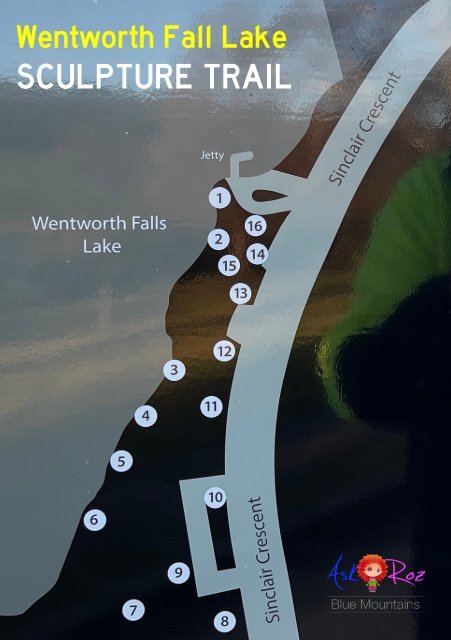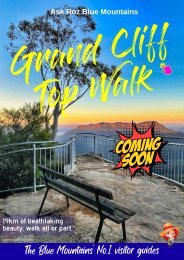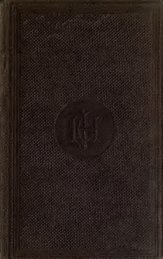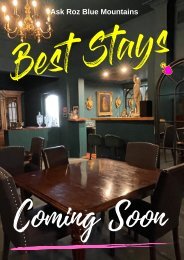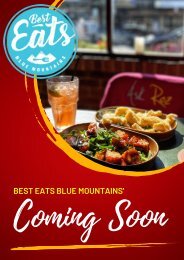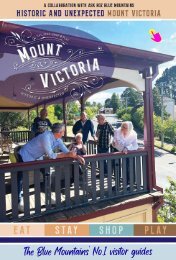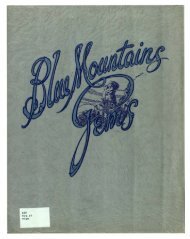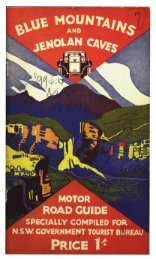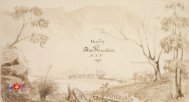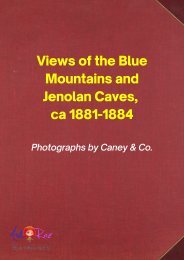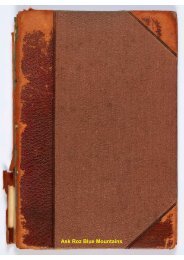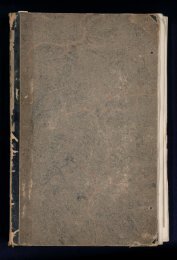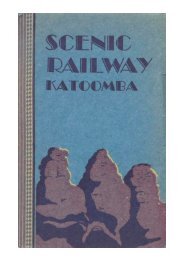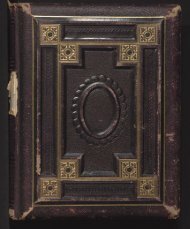Wentworth Falls Lake Sculpture Walk
Take a walk and discover the carved sandstone sculptures in the park. Created in 2000 as part of the Wentworth Falls Lake Sculpture Project, each sculpture depicts the seed pod of a native plant that can be found around the lake. About the Project The Wentworth Falls Lake Sculpture project began with the idea to create the first of several sculpture parks throughout the Blue Mountains, with permanent and changing artworks on public land. Sculpture parks or indeed any other art in public spaces are signposts of artistic communities, local involvement and pride. Public art in general enhances the natural or built environment, takes art out of the Gallery and into the open, for everyone to enjoy and interact with. The Blue Mountains was nominated for World Heritage Listing, for its natural beauty, and at the same time became the ‘City of the Arts’, due to its large and varied arts community. As a response to both, it was an obvious choice to use sandstone as a medium, and carving as a technique, to draw attention to the importance of native plants and the role they play within our environment, our culture and our heritage.
Take a walk and discover the carved sandstone sculptures in the park.
Created in 2000 as part of the Wentworth Falls Lake Sculpture Project, each sculpture depicts the seed pod of a native plant that can be found around the lake.
About the Project
The Wentworth Falls Lake Sculpture project began with the idea to create the first of several sculpture parks throughout the Blue Mountains, with permanent and changing artworks on public land. Sculpture parks or indeed any other art in public spaces are signposts of artistic communities, local involvement and pride.
Public art in general enhances the natural or built environment, takes art out of the Gallery and into the open, for everyone to enjoy and interact with. The Blue Mountains was nominated for World Heritage Listing, for its natural beauty, and at the same time became the ‘City of the Arts’, due to its large and varied arts community.
As a response to both, it was an obvious choice to use sandstone as a medium, and carving as a technique, to draw attention to the importance of native plants and the role they play within our environment, our culture and our heritage.
Create successful ePaper yourself
Turn your PDF publications into a flip-book with our unique Google optimized e-Paper software.
<strong>Wentworth</strong> Fall <strong>Lake</strong><br />
SCULPTURE TRAIL
<strong>Wentworth</strong> <strong>Falls</strong> <strong>Lake</strong> SCULPTURE TRAIL<br />
This eMag was compiled as a guide to the "<strong>Wentworth</strong> <strong>Falls</strong> <strong>Lake</strong> <strong>Sculpture</strong> Trail.<br />
The following pages are © Blue Mountains City Council.<br />
MORE information.<br />
The trail starts here.<br />
Website • Facebook • VISITOR eMag
contents<br />
acknowledgements 2<br />
foreword 3<br />
Role of Public <strong>Sculpture</strong> 4<br />
Vegetation Types of <strong>Wentworth</strong> <strong>Falls</strong> 8<br />
11 Nick Dörrer<br />
13 Ellan<br />
15 Anna Baird<br />
17 Mary Anderson<br />
19 Michael Byrt<br />
21 Vicki Skeen<br />
23 Robyn Austin<br />
25 Peter Baird<br />
27 Doris Rainsford<br />
29 Hugo Rojas<br />
31 Alexis Apfelbaum<br />
33 Marco Grilli<br />
35 Maija Collishaw<br />
37 Gabriella Hegyes<br />
39 Sonja van As<br />
41 Petrina Louise Fuda<br />
Works in Progress 42<br />
Biographies 50<br />
Education Kit 56<br />
1
acknowledgments<br />
I gratefully acknowledge the following people and organisations<br />
who have made contributions to this project:<br />
Artists: Nick Dörrer, Ellan, Anna Baird, Mary Anderson,<br />
Michael Byrt, Vicki Skeen, Robyn Austin, Peter Baird, Doris<br />
Rainsford, Hugo Rojas, Alexis Apfelbaum, Marco Grilli, Maija<br />
Collishaw, Sonja van As and Petrina Louise Fuda.<br />
Technical assistants: Kevin Atkins, Ken Anderson, Max<br />
Skeen, Malcolm Mc Causland and Harley Ives.<br />
The original group of students who could not continue<br />
the project, due to its delay: Julie Moremon, Jennifer Mc<br />
Elligott, Denise Portanger, Rita Lynch, Natalie Topaz, Mick<br />
Morrow, Raoul Olivares, Susan Ashley and Dawn Wilson.<br />
Margaret Baker for information on native plants.<br />
Elin Howe for the essay on public sculpture.<br />
Esther Scholem for proof reading.<br />
The local community and visitors for their support.<br />
All those who have contributed towards the education kit.<br />
Blue Mountains City Council<br />
Blue Mountains Inaugural ‘City of the Arts’<br />
New South Wales Government - Ministry for the Arts<br />
Blue Mountains Organic Community Gardens<br />
Nepean Community College<br />
BMCC Staff<br />
John Ellison - Cultural Officer<br />
Lin Mountstephen - Cultural Development Co-ordinator<br />
Jasmine Lance - Cultural Development Officer<br />
Rick Goehner -Open Space & Recreation Planning Officer<br />
Rachael Veldman -Open Space & Recreation Technical Officer<br />
Supapon Raffan Lantay Lefkovich - Community Gardens Co-ordinator<br />
Phillip Furken - Yellow Rock Quarry<br />
Ian Hayes & Associates - Consulting civil and structural engineers<br />
Rod Hunter, Stephen Hunter & Padraig Hungerford - Milestone<br />
Masons<br />
Phillip Tilt - Bobcat & Tipper Hire<br />
Peter Morris & staff - Mountain Cranes and Rigging services<br />
Louisa Murray - Information Officer, Royal Botanical Gardens<br />
Warren Ross - Blue Mountains Community Arts Council<br />
Gabriella Hegyes<br />
Project Organiser<br />
2
foreword<br />
The <strong>Wentworth</strong> <strong>Falls</strong> <strong>Lake</strong> <strong>Sculpture</strong> project began with the idea<br />
to create the first of several sculpture parks throughout the Blue<br />
Mountains, with permanent and changing artworks on public<br />
land. <strong>Sculpture</strong> parks or indeed any other art in public spaces are<br />
signposts of artistic communities, local involvement and pride.<br />
Public art in general enhances the natural or man made environment,<br />
takes art out of the Gallery and into the open, for everyone<br />
to enjoy and interact with. The Blue Mountains was nominated<br />
for World Heritage Listing, for its natural beauty, and at the same<br />
time became the ‘City of the Arts’, due to its large and varied arts<br />
community. As a response to both, it was an obvious choice to<br />
use sandstone as a medium, and carving as a technique, to draw<br />
attention to the importance of native plants and the role they play<br />
within our environment, our culture and our heritage.<br />
Gabriella Hegyes<br />
3
Role of Public <strong>Sculpture</strong><br />
This project’s co-ordinator, Gabriella Hegyes, has conceived a rich cultural<br />
menu for visitors to this site. Located around the perimeter of a popular<br />
picnic spot beside <strong>Wentworth</strong> <strong>Falls</strong> <strong>Lake</strong>, the large sandstone carvings are<br />
visible from the road, and their plump inviting forms beckon the passer-by.<br />
Once lured on to the site by these voluptuous shapes, one quickly realises<br />
that the aesthetic experience is enriched by other information. The sculptures<br />
represent the seed pods of native plants in the area and each sculpture<br />
has been located near its referent for easy identification. This is public<br />
art which aims to stimulate the visitor’s interest in both the<br />
indigenous botanical phenomena and the artists’ interpretions.<br />
The story of this project’s eventual realisation at <strong>Wentworth</strong> <strong>Falls</strong> <strong>Lake</strong><br />
sheds some light on the shape it has taken. It has had a long gestation<br />
period. Originally it was conceived, in 1995, as a student project for a<br />
sculptural component to enrich a proposed community permaculture garden<br />
at Clairvaux. The students were drawn from Hegyes’ class at Nepean<br />
Community College. The Clairvaux site eventually proved untenable, and<br />
over the next few years Hegyes tenaciously negotiated various new sites<br />
and agendas for the sandstone carvings until they finally materialised on<br />
their present site. During this time many of the original students have become<br />
practising professional artists. Hegyes also invited established professional<br />
artists on board as the project’s shape changed. This chequered<br />
history has served to enrich and broaden the scope of Hegyes’ original<br />
agenda.<br />
4
Conceived as a community project, it has attracted a community at every<br />
stage of its development. After numerous false starts, the unfinished<br />
sandstone blocks were eventually relocated in a group at the <strong>Wentworth</strong><br />
<strong>Falls</strong> site, where access to a power source was made available, enabling<br />
the artists to use power tools for the initial shaping. The work, although<br />
cordoned off from the public, was still highly visible, and attracted a<br />
stream of regular locals as well as daytrippers, curious about progress.<br />
Because the artists were volunteering their labour, they tended to work on<br />
the carvings during the weekends and, when interviewed, many of them<br />
joked that sometimes they felt like performance artists for the picnickers.<br />
Nevertheless on-site production has served to establish a rapport with local<br />
residents, and overtly demonstrate the labour involved in a way that work<br />
produced in a studio, and then delivered to the site, cannot. This<br />
interaction is invaluable for both artist and audience as both parties<br />
develop an appreciation of one another’s concerns. When sculpture arrives<br />
fully formed at a public site, it is easy for viewers to forget that it<br />
represents someone’s labour. Likewise if artists merely visit a site with a<br />
view to locating their work, they will not have the opportunity to form an<br />
appreciation of the way that particular piece of public space is valued by<br />
the people who frequent it. The necessity of working on site created the<br />
opportunity for artist and audience to communicate on a range of interelated<br />
site-specific topics from aesthetic practice to environmental issues, as<br />
well as just enjoying everyday social conversation.<br />
5
Selecting a range of native plants growing in abundance on the <strong>Wentworth</strong><br />
<strong>Falls</strong> site, Hegyes asked each artist to create a carving of the selected<br />
plant’s seedpod. The medium - local sandstone blocks hewn from Yellow<br />
Rock Quarry, Winmalee - is brittle and necessitated the artists working<br />
with simple forms. They have isolated the dominant characteristics of each<br />
seedpod and distilled these forms to create their aesthetic interpretations.<br />
Each carving is labelled with botanical information and accompanied by an<br />
engraving which depicts other aspects of the plant.<br />
The combined effect on the viewer of this presentation is to intensify the<br />
process of looking. Despite the sandstone medium, one is first struck by the<br />
sensual, fleshy quality of the seedpod carvings - an effect enhanced by their<br />
outsized scale and exaggerated forms as much as it is informed by their<br />
subject matter. They literally beckon the viewer to take a closer<br />
look. This initial invitation brings you up to the botanical information and<br />
immediately you find yourself casting about the immediate area for the<br />
relevant native plant. The excitement of identification intensifies if you<br />
find one of the tiny seedpods, and this quickly returns your attention to<br />
the carving, only this time you look with a more informed gaze. This<br />
circular pattern of looking serves to facilitate understanding both of the<br />
native flora and of its aesthetic translation.<br />
The day that I visited the work-site I was very aware of the stream of<br />
curious visitors and the good-natured banter which ensued as they chatted<br />
with the artists. By this time the carvings were nearing completion, and<br />
artists were working with hand tools. There are few sights more fascinating<br />
than watching skilled people do their stuff, and this experience in turn<br />
becomes the stuff of the witnesses’ stories. Many of those fortunate enough<br />
to have seen these carvings evolve are locals and regular visitors to the site.<br />
Their testimony will undoubtedly often punctuate the experience for future<br />
visitors.<br />
6
Contemporary debates around public art stress the need to move away<br />
from the old public-monument model of art practice, and develop a participatory<br />
model which engages its audience. Artists are now seeking a<br />
model which develops a relationship between art production and audience<br />
participation. Hegyes’ community-conscious approach appears to have<br />
achieved these goals for a wide audience. The scale of the seedpod carvings<br />
seems to have great appeal for small children, who I noticed were<br />
quick to investigate the unattended work-in-progress. For both primary<br />
and high schools the project will undoubtedly have field-trip appeal across<br />
a range of subjects, and the adult visitor should also find the project<br />
tempting. For the artists involved - all local people - it has been an invaluable<br />
professional experience. This must especially apply to those who<br />
started as students with little or no experience in stone carving. It must be<br />
rewarding indeed to see their inviting finished carvings set out around the<br />
foreshores of the lake.<br />
From every stage in its long gestation this is a project which has involved<br />
a range of communities, from those whose concerns revolve around the<br />
environment to those wanting to explore aesthetic issues. This community<br />
focus has contributed to its eventual participatory nature. It is public art<br />
which during its evolution has, and continues to, work as a social catalyst.<br />
Elin Howe<br />
November 1999<br />
7
Vegetation Types of <strong>Wentworth</strong> <strong>Falls</strong><br />
On Sunday 23 rd May 1813, Gregory Blaxland, a member of the first party of<br />
white explorers to visit <strong>Wentworth</strong> <strong>Falls</strong>, recorded in his journal that the group<br />
encamped on the side of a swamp, with a beautiful stream of water running<br />
through it. Two years later, on Tuesday 16 May 1815, Governor Macquarie’s<br />
touring party camped here on their return journey from Bathurst. Macquarie<br />
observed that here was a very extensive pretty valley, with a lum of very fine<br />
fresh good water, with tolerable good feed for cattle … I have this day named<br />
the place Jamison’s Valley….<br />
‘Jamison’s Valley’, which today is largely occupied by <strong>Wentworth</strong> <strong>Falls</strong> <strong>Lake</strong><br />
would have been known to Aboriginal people for many thousands of years before,<br />
as a place of fresh water and an environment rich in resources – edible<br />
plants and animals, timber, fibre, medicinal items and stone. A further abundance<br />
of useful products was also to be found in the wider Jamison Creek<br />
catchment which still contains representative stands of many Blue Mountains<br />
vegetation communities today<br />
Most widespread are the open-forests with canopies dominated by species<br />
of Eucalypt and understories of diverse life forms layered from tall shrubs to<br />
small herbs. They are found on the better-drained and relatively sheltered<br />
valley sides, and follow Jamison Creek for much of its course before it leaps<br />
over <strong>Wentworth</strong> <strong>Falls</strong>. Towards the ridges, where growing conditions become<br />
tougher, the treed canopy thins to woodland and the lessening shade promotes<br />
a colourful profusion of hard-leaved shrubs. Where exposure to wind,<br />
sunlight and even fire is greatest, heath dominates. Plants here are toughened<br />
and bonsaied in pockets of thin, dry, impoverished soil that develop between<br />
expanses of sandstone that often record the presence of the original inhabitants<br />
of the region.<br />
8<br />
Interspersed with these communities where drainage is poor, are the swamps<br />
most frequently recorded by early travellers. On valley slopes these patches<br />
of vegetation, that from afar looks grass-like or even mown, mark the zones of<br />
seepage where groundwater surfaces along bands of claystone. Such ‘hanging’<br />
swamps contain a tangled profusion of rushes, sedges and shrubs which
tolerate ‘wet feet’. Close to the streams deep deposits of poorly drained<br />
peaty sands also favour swamp dwellers. Depending particularly on the time<br />
since the last fire, the swamps will be either dominated by sedges or by<br />
shrubs.<br />
In the most sheltered places, usually below the cliffs that display their own<br />
specialised collection of plants, forests grow tall and lush. Below <strong>Wentworth</strong><br />
<strong>Falls</strong> where soils are deeper, richer and moisture retentive, majestic Eucalypts<br />
and Turpentines of the tall open-forests tower over soft-leaved shrubs and<br />
tree ferns. In the most sheltered places these are replaced by closed-forest,<br />
here represented by the Warm Temperate Rainforest community. Stands of<br />
the distinctively lichen-blotched Coachwoods and the fragrant Sassafras filter<br />
sunlight through to the fern carpeted silence of the forest floor.<br />
Reflecting the range of environmental conditions that sustain the different<br />
vegetation communities, are the seed pods of the plants, as diverse and<br />
fascinating as the flowers themselves. From the rainforests come the spore<br />
bearing ferns, descendants of plants from a time before flowering plants and<br />
seeds. In these and other sheltered forests where growing conditions are<br />
generous, many fruit, particularly of the understorey plants are fleshy or thinwalled<br />
like those of the Geebungs. Such fruit are quickly eaten and spread<br />
by birds. The long woody capsules of the Waratah, and the leguminous pod<br />
of the Cedar Wattle will readily open and spill seed to the ground in these<br />
more favourable locations.<br />
As environmental conditions harshen so the seed pods become tough,<br />
woody and gnarled. They are often held on the plant until opened by a hardbeaked<br />
bird, a passing fire or drought. Eucalypts, Bottlebrush and Tea-trees<br />
protect numerous seeds in thin walled woody capsules for years until shed<br />
by opening valves. The projecting velvet-coated seed sacs of Banksias and<br />
the thickened woody follicles of Hakeas are kept tightly closed, protecting<br />
their winged seeds indefinitely until a new cycle of life is ready to begin again<br />
in a community of plants in the Blue Mountains.<br />
9
Juncus usitatus<br />
Common Rush<br />
The moist loamy-sands which fringe <strong>Wentworth</strong> <strong>Falls</strong> <strong>Lake</strong> provide ideal conditions for the growth<br />
of dense tufts of this perennial rush. Its upright, mid-green stems are a slender .5–2 mm wide,<br />
and extend some 60-100cm from underground rhizomes. Inconspicuous leaves tip long open<br />
stem-clasping sheaths which colour downwards from yellow-brown to red-brown and glossy near<br />
the base. From late spring to summer, small but numerous straw-brown, wind-pollinated flowers<br />
line fragile spreading branchlets that extend for up to 6cm from the sheaths. Tiny seeds develop<br />
in 1.5mm long, golden-brown, blunt elliptical capsules. Becoming sticky when wet, the seeds are<br />
spread by passing animals. This rush was probably one of the ‘grasses’ valued as fodder by early<br />
European travelers to this site.<br />
Family: Juncaceae<br />
10
1 Nick Dörrer<br />
H: 190cm x W: 140cm x D: 90cm<br />
11
Eucalyptus subsp. radiata<br />
Narrow-leaved Peppermint<br />
Look into the canopy of the woodland around the <strong>Lake</strong> and you will see the fine foliage of the<br />
Narrow-leaved Peppermint silhouetted against the broader leaves of other eucalypts which share<br />
the better-drained slopes. Glossy-green alternate adult leaves are long, thin and narrow, only 1.5<br />
cm wide. An intense peppermint fragrance is released from oil dots when freshly fallen leaves are<br />
crushed underfoot, adding to the enjoyment of walking by this graceful short-fibred tree. From late<br />
spring to early summer, groups of up to 20 radiating white flowers cluster towards the ends of the<br />
pendulous branches. The globular to pear-shaped, stalked woody fruit are 4-6mm wide and long.<br />
Each has a thick rim and 3 or 4 enclosed valves which open to release fine reddish-brown seed.<br />
Family: Myrtaceae<br />
12
2 Ellan<br />
H: 76cm x W: 153cm x D:110cm<br />
13
Leptospermum grandifolium<br />
Woolly Tea-tree<br />
In late spring, white splashes of Woolly Tea-tree flowers colour the swamp margins and stream<br />
banks around <strong>Wentworth</strong> <strong>Falls</strong> <strong>Lake</strong>. Clasping the spreading branches of this tall shrub, the 15mm<br />
wide solitary flowers unfold from woolly buds. Five petals, underlain by densely hairy sepals, spread<br />
from the rim of stamens and a bright green ovary that matures to a 10mm wide, domed and flaky<br />
seed capsule. Many slender thread-like seeds are released from the five chambers of the mature<br />
woody capsule as its surface lifts and spreads. New stems and foliage are silky hairy. The sharppointed,<br />
alternate leaves are large, up to 3cm long and 7mm wide. They are grey-green in colour<br />
with 3 to 5 parallel veins and a downy underside.<br />
Family: Myrtaceae<br />
14
3 Anna Baird<br />
H: 63cm x W: 112cm x D:112cm<br />
15
Gleichenia dicarpa<br />
Pouched Coral Fern<br />
Springing in green tangles from 2m long, branched stalks that are finely hairy, the fronds of this<br />
terrestrial fern are a common sight wherever there is damp ground. Spreading a further 1–2m,<br />
the many-forked leathery fronds terminate in 3-5cm long leaflets or pinnules which extend at right<br />
angles from a central axis that is covered in brown hairs. The upper surface of the pinnule is green<br />
to yellowish-green and glossy, and the underside is covered with pale hairs. Each pinnule is divided<br />
into many 1-5mm long segments. The end segments of fertile fronds are then turned under to form<br />
pouches. Each pouch contains two sporangia from which are released the reproductive spore. This<br />
fern is a colonizer of damp ground, creeping towards disturbed areas on scaly rhizomes.<br />
Family: Gleicheniaceae<br />
16
4 Mary Anderson<br />
H: 55cm x W: 108cm x D: 92cm<br />
17
Callistemon citrinus<br />
Crimson Bottlebrush<br />
The crimson red ‘bottlebrushes’ of Callistemon citrinus create floral spectaculars along stream banks<br />
and swamp edges from spring to summer. Each 12 cm long ‘bottlebrush’ displayed on the ends of<br />
stiff upright branches, is a spike of hundreds of flowers, each with 5 tiny petals and long brilliant red<br />
stamens. The nectar-rich flowers are sought by pollinating honeyeaters. Clusters of woody cupshaped<br />
4-7mm wide capsules persist on the branches, protecting the numerous seeds for years.<br />
Sunlight shining through the waxy, 3-7cm long lance-shaped leaves, reveals an abundance of oil<br />
dots which release the citrus fragrance for which this Callistemon is named. Pink, softly-hairy new<br />
growth continues to attract the eye to this 2-3m high shrub well after flowering.<br />
Family: Myrtaceae<br />
18
5 Michael Byrt<br />
H: 75cm x W: 160cm x D: 160cm<br />
19
Grevillea subsp. acanthifolia<br />
Swamp Grevillea<br />
Found only in the higher parts of the Blue Mountains, Grevillea acanthifolia grows in prickly thickets<br />
in the damp peaty soils of hanging swamps. The flowers are arranged in a 5-10cm long upright<br />
‘toothbrush’ towards the ends of long branches. Silvery-pink, softly hairy buds open to long upright<br />
styles which may be pink or red. Although the flowering season is from spring to summer,<br />
individual blooms may be seen at any time of the year. After pollination by honeyeating birds, two<br />
seeds develop in a boat-shaped, thin-walled follicle which retains the remnants of the style as a tail.<br />
The deeply divided leaves with ultimate wedge-shaped lobes, have sharp points and down-turned<br />
edges. They are arranged alternately on tough branches which may be low spreading or dramatically<br />
upright to 2m.<br />
Family: Proteaceae<br />
20
6 Vicky Skeen<br />
H: 95cm x W: 45cm x D: 150cm<br />
21
Patersonia sericea<br />
Silky Purple-flag<br />
Bright violet to mauve flowers supported on long stalks which rise from a grassy tuft of leaves<br />
are a distinctive feature of this perennial herb. Each flower, which has three large, and three small<br />
spreading petals, is surrounded by 30mm long, brown bracts. Individual flowers are given only one<br />
sunny day of glorious colour, though colonies of plants bloom in succession from late winter to<br />
spring. Rare white flowers are a special find. The flower stem is 30-50cm long and silky towards the<br />
top. The many 2-3mm long waxy brown ridged seeds are enclosed in a 15-30mm long cylindrical<br />
capsule. Each slender green leaf is 30-60cm long, flat to cylindrical and upright or spreading.<br />
Lower margins are lined with dense hairs. This Patersonia is frequently encountered in open-forests,<br />
woodland and swamp edges.<br />
Family: Iridaceae<br />
22
7 Robyn Austin<br />
H: 120cm x W: 95cm x D: 105cm<br />
23
Xanthorrhoea resinosa<br />
Grass Tree<br />
The most obvious feature of Grass Trees is the flowering spike which is supported on a stalk or<br />
scape. In this species the scape is usually longer than the spike extending the overall height of<br />
the plant to 2.5m. It rises from slender quadrangular blue-green leaves that arch gracefully over an<br />
underground or short trunk. The spike is velvet brown in appearance from densely packed hairy<br />
dark brown bracts. Shiny brown, hard-capsuled, prominent fruit develop from many creamy-white<br />
flowers. The nectar is an invaluable energy source for insects, birds and small mammals, especially<br />
after fire. Aboriginal people soaked the flowers in water to make a sweet drink. They also used the<br />
scape and spike as a spear, glueing onto it stone tips and barbs with the yellow resin powdered<br />
from the leaf bases.<br />
Family: Xanthorrhoeaceae<br />
24
8 Peter Baird<br />
H: 155cm x W: 165cm x D: 110cm<br />
25
Allocasuarina littoralis<br />
Black She-oak<br />
Cockatoos love Casuarinas. Hard woody seed cones are crunched loudly apart and debris rained<br />
on unsuspecting passers-by as the birds feast on a harvest of seeds in the open-forests. In the<br />
Black She-oak, a 5-15m tall, corky-barked tree, the stalked cone is a 12-10mm long ‘barrel’ with a<br />
blunt end. Angular protruding valves on the cones open to release dark winged seeds. Cones are<br />
found on those trees with female flowers. These grow in red tufts within the foliage. Each tiny flower<br />
has two thread-like red stigmas. These trap pollen that is wind-blown from the rusty male flowers<br />
which cluster at the end of branchlets, sometimes on a different tree, often on the same. Interestingly<br />
the branchlets, or cladodes, are photosynthetic as the leaves are reduced to regularly spaced<br />
rings of 6–8 tiny teeth.<br />
Family: Casuarinaceae<br />
26
9 Doris Rainsford<br />
H: 75cm x W: 125cm x D: 160cm<br />
27
Hakea teretifolia subsp. teretifolia<br />
Dagger Hakea<br />
Prickly thickets of this Hakea guard the wet heaths and swamp from all but the most intrepid visitor.<br />
Needle sharp, cylindrical leaves up to 5cm long, characterise this rigid shrub which may be low<br />
and spreading in windy locations or up to 3m tall when sheltered. From spring to summer a wonderful<br />
abundance of softly hairy white flowers cluster on short stalks in the leaf axils. Segments of<br />
the 4-6mm long floral tube roll back to one side. The white style, at first curved into the floral tube,<br />
is released to reveal the pollen presenter. Moths, which are attracted to white flowers, are evening<br />
pollinators. The 3cm long dagger-like, beaked fruit is a tough woody follicle which splits in half to<br />
release two black winged seeds. Aboriginal people collected the nectar-rich flowers of Hakeas to<br />
make sweet drinks.<br />
Family: Proteaceae<br />
28
10 Hugo Rojas<br />
H: 55cm x W: 102cm x D: 210cm<br />
29
Acacia elata<br />
Cedar Wattle<br />
One of the loveliest Acacias, it achieves graceful heights of 18m in sheltered valleys particularly on<br />
the edges of rainforest. The cedar-like leaves are 30-40cm long and a light yellow when young. Described<br />
as bi-pinnate, they are twice divided into 3-5 pairs of pinnae, then 10-20 pairs of pinnules.<br />
The upper surface of each 5cm long pinnule is glossy green and paler beneath. Individual flowers<br />
have 4 or 5 tiny petals and numerous pale yellow stamens. They gather into globular heads of up<br />
to 50 flowers. Then up to 60 heads join in axillary clusters to put on a spectacular summer display.<br />
The straight seed pod is up to 15cm long and 14mm wide, and dark grey to brown in colour. As<br />
with other leguminous plants, the pod splits on both sides to reveal a row of plump seeds, each<br />
joined to the pod by a stalk or funicle.<br />
Family: Mimosaceae<br />
30
11 Alexis Apfelbaum<br />
H:46cm x W: 120cm x D: 56cm<br />
31
Lambertia formosa<br />
Mountain Devil<br />
With the distinctive devil’s head seed pod of a short beak and two long horns, this is one of the<br />
best known shrubs in the Blue Mountains. Hidden amongst whorls of sharp tipped, linear leaves,<br />
the gnarled woody fruit colours with age from green to grey and eventually splits to reveal a winged<br />
seed in each of the two valves. The fruit develops from erect clusters of 7 orange to bright red<br />
flowers that are surrounded by red-green bracts. Each flower consists of a 4cm long floral tube with<br />
a rolled back fringe, and a protruding style. Abundant in nectar they were favoured by Aboriginal<br />
people as a source of sugary carbohydrate. Today they are sought by honeyeating birds and native<br />
insects who are often denied this sweet pleasure by European bees which drill into the flower base<br />
and drain away the liquid.<br />
Family: Proteaceae<br />
32
12 Marco Grilli<br />
H: 78cm x W: 120cm x D:170cm<br />
33
Banksia serrata<br />
Old-man Banksia<br />
Old-man Banksia is a revered archivist of the bush, recording and storing the passage of time and<br />
events in its knobbly grey bark that fissures with age. With a gnarled ancient appearance it has a<br />
distinguished place in the small tree layer of open-forests and woodlands. Its sturdy leaves are up<br />
to 16cm long and evenly serrated. Green and waxy above, the underside is a velvety grey-green. In<br />
summer thousands of flowers assemble in stocky creamy-grey spikes, and produce copious nectar<br />
that attracts insects, birds and possums. Only some of the flowers develop into the large brown<br />
velvety smooth seed pods which project like heavy eyelids from the shaggy grey hair of the long<br />
withered styles. It may take years, or even a fire, before each pod opens to reveal two black winged<br />
seeds.<br />
Family: Proteaceae<br />
34
13 Maija Collishaw<br />
H: 55cm x W: 75cm x D: 133cm<br />
35
Telopea speciosissima<br />
Waratah<br />
With a fiery red head of densely packed flowers and large petal-like bracts, supported proudly on<br />
a few upright 2-3m long branches, the Waratah of Aboriginal dreaming stories, is the real attention<br />
seeker in eucalypt forests. Most stunning is the wonderful symmetry of the thick red styles which<br />
kneel side by side facing the apex of a flower head that may be up to 15cm wide. The name, ‘Telopea’,<br />
which means ‘seen from afar’ is most apt. After flowering 10-20 winged seeds are pouched<br />
in long woody follicles which mature from green to grey, and hang below the new red-tinged foliage<br />
like drying bananas. The leaves too are distinctive, varying according to growing conditions. Always<br />
long, often to 16cm, some are tough with uneven toothed margins and obvious veins, while others<br />
are more softly waxy.<br />
Family: Proteaceae<br />
36
14 Gabriella Hegyes<br />
H: 102cm x W: 52cm x D: 158cm<br />
37
Isopogon anemonifolius<br />
Broad-leaf Drumsticks<br />
Like golden orbs of spring sunshine, the densely packed terminal flower heads of the Isopogon<br />
radiate a yellow glow into the shrub layer of eucalypt forests and woodlands. Each yellow flower is<br />
only 10-12mm long and is surrounded by furry bracts. After pollination the bracts become larger<br />
and woody and cluster tightly around the globular fruiting head which becomes the ‘drumstick’. After<br />
many years the bracts dry out and fall, releasing the seeds. The seed is a nut, 2-3mm long, and<br />
covered with long fine hairs from which the name ‘Isopogon’ meaning ‘equal bearded’, is derived.<br />
When not in flower this 1-2m tall upright shrub, is noticed for its foliage. Changing from rusty-red to<br />
mid-green, the leaves are so deeply dissected into multiple flat narrow segments that the leaf blade<br />
virtually disappears.<br />
Family: Proteaceae<br />
38
15 Sonja van As<br />
H: 55cm x W: 100cm x D: 85cm<br />
39
Persoonia pinifolia<br />
Pine-leaved Geebung<br />
Fine pine-like foliage distinguishes this Geebung from the other tall shrubs in open-forests of lower<br />
altitudes. Densely packed on graceful drooping branches, each bright green leaf is 3-6cm long, and<br />
cylindrical with a fine point and a faint groove on the upper surface. It is most commonly noticed in<br />
autumn however, when the ends of the branches colour to bright yellow with 5-15cm long spikes<br />
of flowers that nestle amongst the smaller terminal leaves. Each flower is a floral tube of 10-15mm<br />
long, the ends of which roll back in 4 segments to reveal a projecting stigma. The branches then<br />
become loaded with a fine crop of succulent red-green fruit that mature to bunches of bronze-purple<br />
‘grapes’. High in vitamin C and potassium, they were a valued winter food resource for Aboriginal<br />
people.<br />
Family: Proteaceae<br />
40
16 Petrina Louise Fuda<br />
H: 62cm x W: 150cm x D: 100cm<br />
41
Works in Progress<br />
42
43
44
45
46
47
48
49
Biographies<br />
Nick Dorrer<br />
Ellan<br />
Born: Greece 1961<br />
I have dabbled in many forms of art expression, from designing clothes<br />
to sculpting in clay and wax. I also have a longstanding interest in native<br />
plants, including native medicinal herbs as well as native landscape<br />
gardening. However this is my first experience with sandstone. Combining<br />
the knowledge of native plants with sculpting has inspired me to study the<br />
seed form more intensely for purpose other than propagation.<br />
I found sandstone sculpting both challenging as well as interesting:<br />
Challenging because this medium is unforgiving if a mistake is made and<br />
interesting how the stone evolves into the shape it suggests to me.<br />
Anna Baird<br />
Education:<br />
1999-95 Master of Fine Arts, College of Fine Art, NSW<br />
1985 BA Visual Arts, City Art Institute - Institute<br />
1982 Associate Diploma VIS Arts Nepean CAE<br />
Solo Exhibition:<br />
1999 Contingent Form, Public Space & The Personal Kudos<br />
Gallery, Paddington, NSW<br />
1995 Structure & Form, Casula Power House, Casula, NSW<br />
Group Exhibitions:<br />
1999 “Off The Cuff”, Sweet Foray Gallery, Katoomba, NSW<br />
“Blue” YZ Space UWS Nepean, NSW<br />
1998 “Staff Exhibition”, YZ Space UWS Nepean, NSW<br />
“Emotional States”, Sweet Foray Gallery, Katoomba,<br />
NSW<br />
“Hand Luggage”, A Travelling Exhibition to Luxemburg<br />
“Altered Characteristics”, MFA Show, Cofa, NSW<br />
“Calibration,” MFA Show, Selvyn St, Paddington, NSW<br />
“20/20” Group Show, Sweet Foray Gallery, Katoomba,<br />
NSW<br />
“Collaboration with An Absent Friend”, Cofa,<br />
Paddington, NSW<br />
“Collaboration with An Absent Friend 2” dec<br />
Artspace, Katoomba, NSW<br />
“Lusting Impressions”, Sweet Foray Gallery,<br />
Katoomba, NSW<br />
1997 “Unreasonable Encounters”, Sweet Foray Gallery,<br />
Katoomba, NSW<br />
“Erotica” Sweet Foray Gallery, Katoomba, NSW<br />
1996 “A Touchy Subject” Sweet Foray Gallery, Katoomba, NSW<br />
“Block Buster” Sweet Foray Gallery, Katoomba, NSW<br />
1995 “Dimensionally Challenged”, Financially Accessible,<br />
Sweet Foray Gallery, Katoomba, NSW<br />
Staff Show at YZ Space UWS Nepean, NSW<br />
50<br />
Born: Sydney 1978<br />
Visual Art Studies<br />
1997 Lead light, Nepean Community College, Katoomba, NSW<br />
1997-94 Advanced <strong>Sculpture</strong>, Nepean Community College,<br />
Katoomba, NSW<br />
Advanced Photography, Black & White, Nepean<br />
Community College, Katoomba, NSW<br />
1995-94 Experimental Photography, Nepean Community<br />
College, Katoomba, NSW<br />
1994-93 Photography- Black &White, Nepean Community<br />
College, Katoomba, NSW<br />
<strong>Sculpture</strong>, Nepean Community College, Katoomba, NSW<br />
Selected Group Exhibitions:<br />
1995 “Kaleidoscope of Images” Photographic Exhibition,<br />
Penrith Regional Gallery & The Lewers Bequest,<br />
NSW<br />
Group Exhibitions:<br />
1997 “Art in the Mountains” <strong>Wentworth</strong> <strong>Falls</strong> School of<br />
Arts, <strong>Wentworth</strong> <strong>Falls</strong>, NSW<br />
“Art Street 97” Winter Magic Festival, Katoomba, NSW<br />
1996 “Boxed In” Photographic & <strong>Sculpture</strong> Exhibition,<br />
NCC, Katoomba, NSW<br />
“Conspiracy” Mixed Media Polymorph Body Art,<br />
Enmore, Sydney, NSW<br />
“After Image” Photographic & <strong>Sculpture</strong> Exhibition,<br />
NCC, Katoomba, NSW<br />
“Arts In The Mountains ‘96” <strong>Wentworth</strong> <strong>Falls</strong> School<br />
Of Arts, <strong>Wentworth</strong> <strong>Falls</strong>, NSW<br />
“Camp Creative” Katoomba, NSW
1995 “Desire” Photographic Exhibition Café 40 Gallery,<br />
Katoomba, NSW<br />
“Mountain Reflections” Photographic Exhibition,<br />
Kedumba Gallery, <strong>Wentworth</strong> <strong>Falls</strong>, NSW<br />
“Transformations” Photographic & <strong>Sculpture</strong><br />
Exhibition NCC, Katoomba, NSW<br />
“Paper Labyrinths” Photographic Exhibition, Café 40<br />
Gallery, Katoomba, NSW<br />
1994 “Destiny” Photographic & <strong>Sculpture</strong> Exhibition, NCC,<br />
Katoomba, NSW<br />
“Youth Art” Katoomba Youth Centre, Katoomba, NSW<br />
“Light Forms” <strong>Wentworth</strong> <strong>Falls</strong> School the Arts,<br />
<strong>Wentworth</strong> <strong>Falls</strong>, NSW<br />
“Impressions” Photographic Exhibition, Café 40<br />
Gallery, Katoomba, NSW<br />
“Eat” <strong>Wentworth</strong> <strong>Falls</strong> School the Arts,<br />
<strong>Wentworth</strong> <strong>Falls</strong>, NSW<br />
“Year of The Family” Photographic Exhibition, Café 40<br />
Gallery, Katoomba, NSW<br />
1993 “Focused” Photographic & <strong>Sculpture</strong> Exhibition, NCC,<br />
Katoomba, NSW<br />
Awards:<br />
1997 “Art Street” First Place, 3D Art works, Winter Magic<br />
Festival, Katoomba, NSW<br />
1996 “Rod Kerr Memorial Award” Katoomba High School,<br />
Katoomba, NSW<br />
“3 Unit Visual Arts” Katoomba High School<br />
Katoomba, NSW<br />
Commissions:<br />
1997 ‘Scattered” <strong>Sculpture</strong> Private Collection<br />
1995 “Close Up” Photographic Private Collection<br />
Private Collections represented throughout Australia<br />
Mary Anderson<br />
Education:<br />
1996 <strong>Sculpture</strong> Workshops, Nepean Community College,<br />
Katoomba, NSW<br />
1994 Painting Workshops, Nepean Community College,<br />
Katoomba, NSW<br />
1965 Scholarship for Fine Arts East Sydney Technical College<br />
Group Exhibitions:<br />
1998 Blue Mountains Arts Council, <strong>Wentworth</strong> <strong>Falls</strong> School<br />
Arts, <strong>Wentworth</strong> <strong>Falls</strong>, NSW<br />
Michael Byrt<br />
Born: Sydney 1961<br />
Education:<br />
1988 Higher Certificate, National Art School, Darlinghurst, NSW<br />
1987 Art Certificate National Art School, Darlinghurst, NSW<br />
1986 Art Certificate Meadowbank TAFE, NSW<br />
1983 Diploma KVB, Graphic Design, Sydney<br />
Solo Exhibition:<br />
1989 Dension <strong>Sculpture</strong> Studio, Rozelle, NSW<br />
Exhibitions:<br />
1996 “Degree of Excellence”, UWS, NSW<br />
1997 Go West Café, Katoomba, NSW<br />
1993 Four Sculptors, TAP Gallery, Darlinghurst, NSW<br />
1991 Old Brewery, Goulburn, NSW<br />
1989 Multiple Visions, Art Incorporate, Sydney<br />
1988 Exhibition in “A Minor”, NAS, Darlinghurst, Sydney<br />
Wynne Exhibition, Art Gallery of NSW, <strong>Sculpture</strong><br />
1985 Sydney Morning Herald<br />
Royal Easter Show<br />
Drummoyne Art Award<br />
Lane Cove Art Award<br />
NSW Police Art Exhibition<br />
Awards:<br />
1996 Blue Mountains Art Exhibition<br />
Environmental Award, “Storm Water Mural Project”,<br />
Paddington, NSW<br />
South Sydney Council, Keep Australia Beautiful<br />
Minute Paper, Storm Water Pollution Policy, South<br />
Sydney Council<br />
1994 South Sydney Council, Keep Australia Beautiful<br />
1993 Environmental Award for Excellence, Meadowbank<br />
TAFE, NSW<br />
1985 NSW Police Art Exhibition, Highly Commended<br />
Winner, National Art Award, Cover Design, “The<br />
Farmers Annual” 1986<br />
Commissions<br />
1997 Christmas Card Art Work, For the Hon Pam Allan MP,<br />
Minister for the Environment<br />
Community Mural, Police Youth Club, Redfern, NSW<br />
Seven Kids Theatre Designs, Marian St Theatre,<br />
Killara, NSW<br />
Murals with South Sydney City Council<br />
51
Vicki Skeen<br />
Born Australia 1954<br />
Education:<br />
1999 Candidate for Diploma in Fine Arts, Western Sydney<br />
Institute of TAFE, Werrington, NSW<br />
1995 <strong>Sculpture</strong>, Nepean Commuity College, Katoomba, NSW<br />
1973 Certificate Fine Arts, National Arts School, Kogarah, NSW<br />
Solo Exhibition<br />
1994 <strong>Wentworth</strong> <strong>Falls</strong> School of Arts, <strong>Wentworth</strong> <strong>Falls</strong>, NSW<br />
Group Exhibitions:<br />
1996 “Nutters” Art Arena, Wollongong, NSW<br />
1995 “Transformation” NCC, Katoomba, NSW<br />
1994 “Destiny”, NCC, Katoomba, NSW<br />
Art Related Activities<br />
1996-99 Winter Magic Festival committee member<br />
1998 Blue Mountains Community Arts Council, Vice-President<br />
Radio 2 Blu presenter<br />
1993 Society of Mountains Artists, secretary<br />
1992 Blue Mountains Community Arts Council, secretary<br />
Blue Mountains Artists for Life, founding member and<br />
treasurer<br />
1976 Mark & Geoffrey Designers, Paddington, Sydney, Artist<br />
Robyn Austin<br />
Group Exhibitions:<br />
1999 “Erotica” Sweet Foray Gallery, Katoomba, NSW<br />
“Emotional States” Sweet Foray Gallery, Katoomba,NSW<br />
“20/20 Vision” Sweet Foray Gallery, Katoomba, NSW<br />
“From Small Things” Penrith Regional Gallery & The<br />
Lewers Bequest, NSW<br />
“Journeys”, Sweet Foray Gallery, Katoomba, NSW<br />
1997 “Below The Surface”, Sweet Foray Gallery, Katoomba, NSW<br />
“Body and Beyond” Sweet Foray Gallery, Katoomba,NSW<br />
1995 “Labyrinth” NCC, Katoomba, NSW<br />
1994 “Light Forms” <strong>Wentworth</strong> <strong>Falls</strong> School of Arts,<br />
<strong>Wentworth</strong> <strong>Falls</strong>, NSW<br />
Represented in private collections in the USA and Australia.<br />
Peter Baird<br />
Born Scotland 1953<br />
The emergence of the sculpture was an<br />
intense physical process. The size and composition of the stone, its hard<br />
and soft qualities, involved various chisel-ing, scutching and grinding<br />
techniques. The proportions of the stone allowed various forms of the seed<br />
pod to be created, which can be viewed from different angles.<br />
The stone image, which represents the material form of the plant, encourages<br />
me to be more conscious of the unique flora we have in our bush,<br />
particularly around <strong>Wentworth</strong> <strong>Falls</strong> <strong>Lake</strong>.<br />
Doris Rainsford<br />
Born: Australia 1971<br />
Education:<br />
1998 Candidate for Fine Arts Certificate, Western Sydney<br />
Institute of TAFE, Werrington, NSW<br />
1997-1994 <strong>Sculpture</strong> Workshops, Nepean Community College,<br />
Katoomba, NSW<br />
1999-1994 Photography Workshops, Nepean Community College,<br />
Katoomba, NSW<br />
1997 Stained Glass Workshops, Nepean Community College,<br />
Katoomba, NSW<br />
Solo Exhibition<br />
1999 “flowers, wings and other small things” Sweet Foray<br />
Gallery, Katoomba, NSW<br />
52<br />
Education:<br />
1997 Graduate Diploma of Education, University of Western<br />
Sydney Nepean, NSW<br />
1996 Bachelor of Arts (Honours) Fine Arts, University of<br />
Western Sydney Nepean, NSW<br />
1995 Bachelor of Arts (Fine Arts), University of Western<br />
Sydney Nepean, NSW
Selected Group Exhibitions:<br />
1999 “Sited 99” Charles Darwin <strong>Walk</strong>, <strong>Wentworth</strong> <strong>Falls</strong>, NSW<br />
“Fuse” The Red Exhibition, Penrith Regional Gallery<br />
& The Lewers Bequest, NSW<br />
Solo Exhibitions:<br />
1998 “Uranium Ship” dec Art Space, Katoomba, NSW<br />
1996 “Flight into the Unknown” Sweet Foray Gallery, Katoomba, NSW<br />
Group Exhibitions:<br />
1998 “Earth Woman Environment”, Blue Mountains Women’s<br />
Health Centre, Katoomba, NSW<br />
1997 “Hatched Healthway”, Perth Institute Contemporary Arts, WA<br />
“World In a Match Box 1997”, City Art public space,<br />
Melbourne, VIctoria<br />
“Twentieth Annual <strong>Walk</strong>er Ceramic Award” Victoria<br />
Arts Centre, Melbourne, Victoria<br />
1996 “Another Dose”, Arts Space, Woolloomooloo, NSW<br />
“Mary Alice Evatt Art Award” Casula Power House,<br />
Casula, NSW<br />
Forum Feminism & Art “Dissonants” UWS & UNSW, Cofa<br />
“Giftings 96”, Side on Studio Gallery, Stanmore, NSW<br />
1995 “Multiformity”, Royal Arcade, Sydney Hilton, Sydney<br />
“Origins”, Nepean Arthouse, Penrith, NSW<br />
Art Related Activities<br />
1998-99 Art Teacher, St Clair High School, St Clair, NSW<br />
1999 Community Art teacher<br />
Hugo Rojas<br />
Born: Santiago, Chile 1971<br />
Education:<br />
1996 Graduate Diploma in Education (Secondary), University of<br />
Western Sydney, NSW<br />
1995 Bachelor of Arts (Visual Arts) University of Western of<br />
Sydney, NSW<br />
Solo Exhibition:<br />
1995 Pulse Boxcar Gallery, UWS Nepean, NSW<br />
Group Exhibitions:<br />
1998 “Sustenance” Charles Darwin <strong>Walk</strong>, <strong>Wentworth</strong> <strong>Falls</strong>, NSW<br />
“Sustenance” Sweet Foray Gallery, Katoomba, NSW<br />
1996 Mary Alice Evatt Award Exhibition, Casula Power House, NSW<br />
1995 Images of Men, Kinesis Gallery, Leichhardt,Sydney, NSW<br />
Loom, Obscure Gallery, Building I UWS Nepean, NSW<br />
Strange Bedfellows Exchange, H Block Gallery,<br />
Queensland University Of Technology<br />
Awards:<br />
1995 Recipient, William Fletcher Trust Grant<br />
1995 High Commendation, Chancellor’s Cup Day Art Competition<br />
Experience:<br />
1999 Art Teacher, Nepean H.S, Emu Plains, NSW<br />
1998-97 Art Teacher, Evans H.S, Emu Plains, NSW<br />
1996-95 Gallery Hand, Casula Powerhouse, NSW<br />
1995 Exhibition Assistance, Australian Perspecta<br />
Alexis Apfelbaum<br />
Born USA 1965, arrived Australia 1966<br />
Education:<br />
1998 Certificate In Fine Arts, Werrington TAFE, NSW<br />
1997-96 <strong>Sculpture</strong>, Nepean College, Katoomba, NSW<br />
1997 Ceramics, TAFE, Penrith, NSW<br />
Certificate in Welding, TAFE, Mount Druit, NSW<br />
1994-92 Master of Arts-Art Therapy, University of Western,<br />
Sydney, Kingswood, NSW<br />
1992-91 Summer Intensive, Julian Ashton’s School of the Arts,<br />
Sydney, NSW<br />
1992-89 Macquarie School of Arts, Bathurst, NSW<br />
Selected Group Exhibitions:<br />
1999 “Sited 99” Charles Darwin <strong>Walk</strong>, <strong>Wentworth</strong> <strong>Falls</strong>, NSW<br />
1996 Gasworks Outdoor <strong>Sculpture</strong> Exhibition, Albert Park, Vic<br />
1994 “We Can Imagine’, Penrith Regional Gallery & The Lewers<br />
Bequest, NSW<br />
Group Exhibitions:<br />
1998 “Ko-optic”, Trapezium Gallery. Werrington TAFE, NSW<br />
1997 “Below The Surface”, Sweet Foray Gallery, Katoomba, NSW<br />
“Art in the Mountains”, <strong>Wentworth</strong> <strong>Falls</strong> School of Arts,<br />
<strong>Wentworth</strong> <strong>Falls</strong>, NSW<br />
1996 “Boxed In” Photographic & <strong>Sculpture</strong> Exhibition,<br />
NCC, Katoomba, NSW<br />
“After Image” NCC, Katoomba, NSW<br />
“Art Street 96” Winter Magic Festival, Katoomba, NSW<br />
Work in Public Space<br />
1998-97 Floral Fest, Everglades<br />
1997 “Hair Basket” Installation, MT Blue Hair, Katoomba, NSW<br />
53
Marco Grilli<br />
Gabriella Hegyes<br />
54<br />
1995 Diploma of Education, Hobart, Tamania<br />
1993 BA of Visual Arts, University Western Sydney, Nepean, NSW<br />
Selected Group Exhibitions:<br />
1999 “siTed ’99” Charles Darwin <strong>Walk</strong>, <strong>Wentworth</strong> <strong>Falls</strong>, NSW<br />
Group Exhibitions:<br />
1998-96 “Emotional States” Sweet Foray Gallery, Katoomba, NSW<br />
1998-96 “Erotica” Sweet Foray Gallery, Katoomba, NSW<br />
1998-97 Beneldi House, Sydney, NSW<br />
1992 “Papa” Paddington, NSW<br />
Represented in private collections in Italy and Australia<br />
Maija Collishaw<br />
Born in Rigia-Lativia 1935 - arrived in Australia in 1949<br />
Education:<br />
1989 Associate Diploma Fine Arts, TAFE, Penrith , NSW<br />
1987-85 Art Certificate, TAFE, Penrith, NSW<br />
Solo Exhibitions:<br />
1996 “Reflection” dec Artspace, Katoomba, NSW<br />
Group Exhibitions:<br />
1999 “Sited ‘99” Charles Darwin <strong>Walk</strong>, <strong>Wentworth</strong> <strong>Falls</strong>,NSW<br />
1998 SMA Spring Exhibition, Hydro Majestic, Medlow Bath,<br />
NSW<br />
1997 Cultural Festival, Bankstown Town Hall, NSW<br />
1996 “Boxed In” NCC, Katoomba NSW<br />
SMA Spring Exhibition, <strong>Wentworth</strong> <strong>Falls</strong> School Of<br />
Arts, NSW<br />
1995 “Labyrinth” NCC, Katoomba, NSW<br />
Awards:<br />
1995 SMA Spring Exhibition, <strong>Wentworth</strong> <strong>Falls</strong> School of<br />
Arts, NSW<br />
Commissions:<br />
Represented in private collections in Czech Republic, Lativia & Australia<br />
Born Hungary 1954, arrived in Australia in 1977<br />
Education:<br />
1999 Post Graduate Diploma Visual Arts Monash University<br />
Gippsland, Vic<br />
1994 Bachelor of Arts (Visual Arts) University of Western<br />
Sydney, NSW<br />
1989 Higher Art Certificate National Art School Sydney, NSW<br />
1988 Art Certificate West Wollongong TAFE, NSW<br />
Solo Exhibitions:<br />
1996 “Gift of Racism” dec Artspace, Katoomba, NSW<br />
1993 “ Images from the Kimberley” School of Arts, <strong>Wentworth</strong><br />
<strong>Falls</strong>, NSW<br />
Selected Group Exhibitions:<br />
1999 “Bloom’n Art” Orange Regional Gallery, NSW<br />
“Fuse” Penrith Regional Gallery & The Lewers Bequest,<br />
NSW<br />
“siTed ‘99, Charles Darwin <strong>Walk</strong>, <strong>Wentworth</strong> <strong>Falls</strong>, NSW<br />
1998 “Gasworks Outdoor <strong>Sculpture</strong> Exhibition” Melbourne, Vic<br />
“<strong>Sculpture</strong> Acquisition Show” <strong>Lake</strong> Macquarie City Art<br />
Gallery, NSW<br />
“Sustenance” Charles Darwin <strong>Walk</strong>, <strong>Wentworth</strong> <strong>Falls</strong>, NSW<br />
1997 “Locate/Relocate’ Art in Public Spaces, Albury Regional<br />
Art Centre, NSW<br />
1996 “<strong>Sculpture</strong> Acquisition Show” <strong>Lake</strong> Maquarie City Art<br />
Gallery, NSW<br />
1995 “LeurArt Practice” Site Specific Installations, Leura Mall, NSW<br />
“Bias Binding” Cowwarr Art Space, Cowwarr, Vic<br />
“Mary Alice Ewatt Art Award” Casula Powerhouse, NSW<br />
“Bias Binding” Access Gallery, NGV,Vic<br />
“(Dis) playing David Jones, Parramatta, NSW<br />
1994 “Gasworks Outdoor <strong>Sculpture</strong> Show” Melbourne, Victoria<br />
“Shifting” University of Technology, Brisbane, QLD<br />
1989 “Capita” Fine Arts Grant, Cellblock Gallery, Sydney, NSW<br />
1988 “Illawarra Bicentennial Exhibition” Wollongong City Art<br />
Gallery, NSW<br />
Group Exhibitions:<br />
1998 “ Insieme” Trapezium Gallery, Werrington, NSW<br />
1996 “ From The Mountains to the Sea” Sweet Foray Gallery,<br />
Katoomba NSW<br />
1994 “Gasworks” Platform Contemporary Public Art,<br />
Melbourne, Victoria<br />
“ International <strong>Sculpture</strong> Competition” Sanda, Japan
“<strong>Sculpture</strong> of the Month” Blue Mountains City Council,<br />
Katoomba, NSW<br />
“Postcodes” NSW Arts Council Ultimo, Sydney, NSW<br />
“By Women” Long Gallery Wollongong, NSW<br />
Awards:<br />
1993 <strong>Sculpture</strong> prize, Blue Mountains Community Arts<br />
Council, Renaissance Centre, Katoomba, NSW<br />
1988 Drawing Prize, Fifth Cordeaux Heights Art Purchase<br />
Prize Exhibition Wollongong, NSW<br />
Commissions:<br />
1988 “Sails 1788-1988” Windang Bicentenial Project,<br />
Wollongong, NSW<br />
Art Related Projects:<br />
1999 Project Co-ordinator “siTed ’99” site specific<br />
installations, Charles Darwin <strong>Walk</strong>, <strong>Wentworth</strong> <strong>Falls</strong>, NSW<br />
1998 Joint Project Co-0rdinator “Sustenance” site specific<br />
installations, Charles Darwin <strong>Walk</strong>, <strong>Wentworth</strong> <strong>Falls</strong>, NSW<br />
1997 Founding member, FreshAir Website, Blue Mountains<br />
Contemporary Artists Association.<br />
1998-95 Creator and curator of dec Artspace, Katoomba, NSW<br />
Represented in public and private collections in Australia, Austria, Italy,<br />
Hungary and USA<br />
Sonja van As<br />
Born: Holland 1962<br />
Education:<br />
1999 Candidate for Diploma in Fine Arts, Western Sydney<br />
Institute of TAFE, Werrington, NSW<br />
1998 Certificate IV Fine Arts, Western Sydney Institute of<br />
TAFE, Werrigton, NSW<br />
1997 Certificate in Occupational Studies Arts & Media Voca<br />
tional, Werrington, NSW<br />
Group Exhibitions:<br />
1999 “Fresh Cuts” The Trapezium Gallery, Werrington<br />
TAFE, Werrington, NSW<br />
“Altered States” Sweet Foray Gallery, Katoomba, NSW<br />
“Erotica” Sweet Foray Gallery, Katoomba, NSW<br />
“Emotional States” Sweet Foray Gallery, Katoomba, NSW<br />
1998 “Ko-Optic” The Trapezium Gallery, Werrington<br />
TAFE, Werrington, NSW<br />
1997 “Student Exhibition” Penrith TAFE, Penrith, NSW<br />
Petrina Louise Fuda<br />
Education:<br />
1997 Certificate in Welding, Mount Druit TAFE, Mount Druit,<br />
NSW<br />
1997-96 <strong>Sculpture</strong>, Nepean College, Katoomba, NSW<br />
1995 Certificate in <strong>Sculpture</strong>, Willoughby College of The<br />
Arts, Willoughby, Sydney, NSW<br />
1993-91 Associate Diploma in Graphic Design, The K.V.B<br />
College of Visual Communication, North Sydney, NSW<br />
1990-88 2H Graphics - Training in: Air brush, Illustration,<br />
Advertising , Adelaide, South Australia<br />
1986-84 Bond Private College Of The Arts, Darlinghurst, Sydney,<br />
NSW<br />
1983 Castle Hill College/Painting, CastleHill, NSW<br />
Solo exhibition:<br />
1996 “Breaking Free” dec Artspace, Katoomba, NSW<br />
Selected Group Exhibitions:<br />
1999 “siTed ‘99” Charles Darwin <strong>Walk</strong>, <strong>Wentworth</strong> <strong>Falls</strong>, NSW<br />
1997 “Carnival” Fringe Festival, Span Galleries, Flinders<br />
Lane, Melbourne, Vic<br />
Group Exhibitions:<br />
1997 Camden Art Show, Camden, NSW<br />
OZ Gallery, Katoomba, NSW<br />
Tina Wencher Awards, Menzuros, Melbourne, Vic<br />
1996 “Surfacing” PCL Exhibitionist, Strawberry Hills,<br />
Sydney, NSW<br />
“House Warming” <strong>Sculpture</strong> & Painting Exhibition,<br />
Private Gallery, Darlinghurst, Sydney, NSW<br />
“Art in the Mountains 96” <strong>Wentworth</strong> <strong>Falls</strong> School of<br />
Arts Gallery, <strong>Wentworth</strong> <strong>Falls</strong>, NSW<br />
“Boxed In” The College Gallery, Katoomba, NSW<br />
“I Can Do That” Exhibition for Environment Day,<br />
Katoomba, NSW<br />
“After Image” NCC, Katoomba, NSW<br />
Commissions:<br />
1997 <strong>Sculpture</strong>, 10ft Chair, Wood , Salon Shop Front,<br />
Hiedelburge, Melbourne, Vic<br />
1996 “Heshen & Brass Torso” Private Collection,<br />
Darlinghurst,Sydney, NSW<br />
1996 “Motor Bike” Copper <strong>Sculpture</strong>, Private Collection,<br />
Sydney, NSW<br />
Represented in Private Collections throughout Australia<br />
55
Education Kit<br />
The aim of this project is to increase the appreciation of native plants and public<br />
sculpture.<br />
Each sculpture is situated near the appropriate native plant for easy identification.<br />
Next to each carving, level with the ground there is a plaque, depicting<br />
botanical drawings of the leaf, flower, seed pod, and the seed. This information<br />
is accompanied by the plant’s scientific and common names. These plaques<br />
were made not only to provide information, but also to make rubbings from, for<br />
further study.<br />
The Education Kit contains information on:<br />
• History of stone carving & indigenous rock engravings.<br />
• Historical and contemporary use of native plants in art, craft, design and<br />
literature.<br />
• Art and the natural environment.<br />
• Geology, sandstone formations.<br />
• Botanical information.<br />
• Native plant propagation and garden use.<br />
• Bush food and bush medicine.<br />
• Reading list for further study.<br />
The Education Kit aims to assist primary and secondary students and teachers<br />
in enjoying and understanding the relationship between art and nature as shown<br />
in this project. There are several activities designed for age groups ranging from<br />
kindergarten to tertiary level.<br />
The Education Kit can be purchased from:<br />
Blue Mountains City Council PO Box 189., Katoomba 2780 NSW<br />
56


